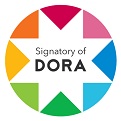Síndrome de burnout y depresión en trabajadores de la Universidad Nacional del Centro del Perú - 2018
DOI:
https://doi.org/10.26490/uncp.horizonteciencia.2020.18.427Abstract
This research begins with the question: What is the relationship between burnout syndrome and depression in workers of the National University of Central Peru, during the academic year 2018? The reason for this work was to establish the correlation between burnout syndrome and depression in workers of the National University of Central Peru, during the academic year 2018. The research was basic in nature. We used descriptive method allowing verifying the correlation between Burnout and depression. The descriptive research design was used corrections; the sampling was non-probability and intentional and to this end we have worked with 150 workers of the National University of Central Peru. The instruments that have been used for research are the inventory of Maslach and the Hamilton scale. In the study of the results obtained has been used the descriptive and inferential statistics. At the end showed the existence of a relationship between job burnout and depression.Downloads
References
APA. (2007). Centro de Apoyo de la APA. Obtenido de p://www.centrodeapoyoapa.org/articulos/
articulo.php?id=21
Buunk, B. y Schaufeli, W. (1993). Burnout: una perspectiva de la teoría de comparación social. En W. B. Schaufeli, C. Maslach, y T. Marek (Eds.), Serie en psicología aplicada: cuestiones y preguntas sociales. Burnout profesional: desarrollos recientes en teoría e investigación. Filadelfia, Pensilvania, EE. UU: Taylor y Francis.
Castaño, García y Leguizamón (2006) Asociación entre el síndrome de estrés asistencial en residentes de medicina interna, El reporte de sus prácticas médicas de cuidados su óptimos y reporte de los pacientes, Univ. Psychol. Bogotá (Colombia) 5 (3): 549-561.
El Sahili, L. (2015). Burnout. Consecuencias y Soluciones. Distrito Federal, México: Editorial el Manual Moderno.
Gil - Monte, P. (2002). Validez Factorial de la adaptación al español del Maslach Burnout Inventory - General Survey. Scielo Salud pública. Recuperado el 23 de agosto de 2018, de http://www.insp.mx/salud/index.html
Gil -Monte, P. (13 de julio de 2018). Scielo Salud Pública. Obtenido de https://www.scielosp.org/scielo.php?pid=S1135-57272009000200003&script=sci_arttext&tlng=pt
Harrison, W. D. (1983). A social competence model of burnout. En: Farber, B. A. (Ed.), Stress and
burnout in the. New York: Pergamon Press.
Hernández, R. Fernández, C. y Baptista, M. (2014). Metodología de la investigación (sexta edición ed.). México: McGraw-Hill. Recuperado el 28 de agosto de 2018, de https://www.uca.ac.cr/wp-content/uploads/2017/10/Investigacion.pdf
Hernández, R. Fernández, C. y Baptista, P. (2014). Metodología de la Investigación (Sexta ed.). Distrito Federal, Distrito federal, México: Mc Graw Hill.
López, M. y Solarte, E. (2016). Evaluación por competencias: Una alternativa para valorar el Desempeño Docente Universitario. Tendencias, 3.
Mariño A., Otero, M., Málaga, G. y Tomateo, J. (2011). Coexistencia del síndrome de Burnout y síntomas depresivos en médicos residentes. Estudio descriptivo transversal en un Hospital Nacional de Lima. Revista Médica Herediana
Maslach, C. & Jackson, S. (1981). The measurement of experienced burnout. Journal of Occupational Behavior, 19,99,113.
Maslach, C. (2009). Comprendiendo el Burnout. California: Ciencia & Trabajo.
Ramos-Brieva y Cordero (1986) Un procedimiento breve y rápido para medir la intensidad de los síntomas depresivos en atención primaria. Scopus, Actas Esp Psiquiatr 2011;39(1):45-8.
Rehm, Gordon-Leventon e Ivens (1987), Rehm. Depression. En C. L. Frame y J. L. Matson (Eds.), Handbook of assessment in childhood 341-371). New York, NY: Plenum Publishing Corp. Stevenson, psychopathology (pp. D. T.
Romney, D. M. (1994). Cross-Validating a Causal Model Relating Attributional Style, Self-Esteem, and Depression: An Heuristic Study. Journal Indexing and Metric Volumen: 74 issue: 1, page(s): 203-207.
San y Arranz (2010). Comprender la Depresión. Barcelona: Editorial Amat S.L.
Winnubst, J. (1993). Organizational structure, social. London: Taylor.
Zabalza, M. (2009). Ser un profesor universitario hoy. La cuestión universitaria, 70.
Downloads
Published
Issue
Section
License
Copyright (c) 2020 Horizonte de la Ciencia

This work is licensed under a Creative Commons Attribution-NonCommercial 4.0 International License.
















